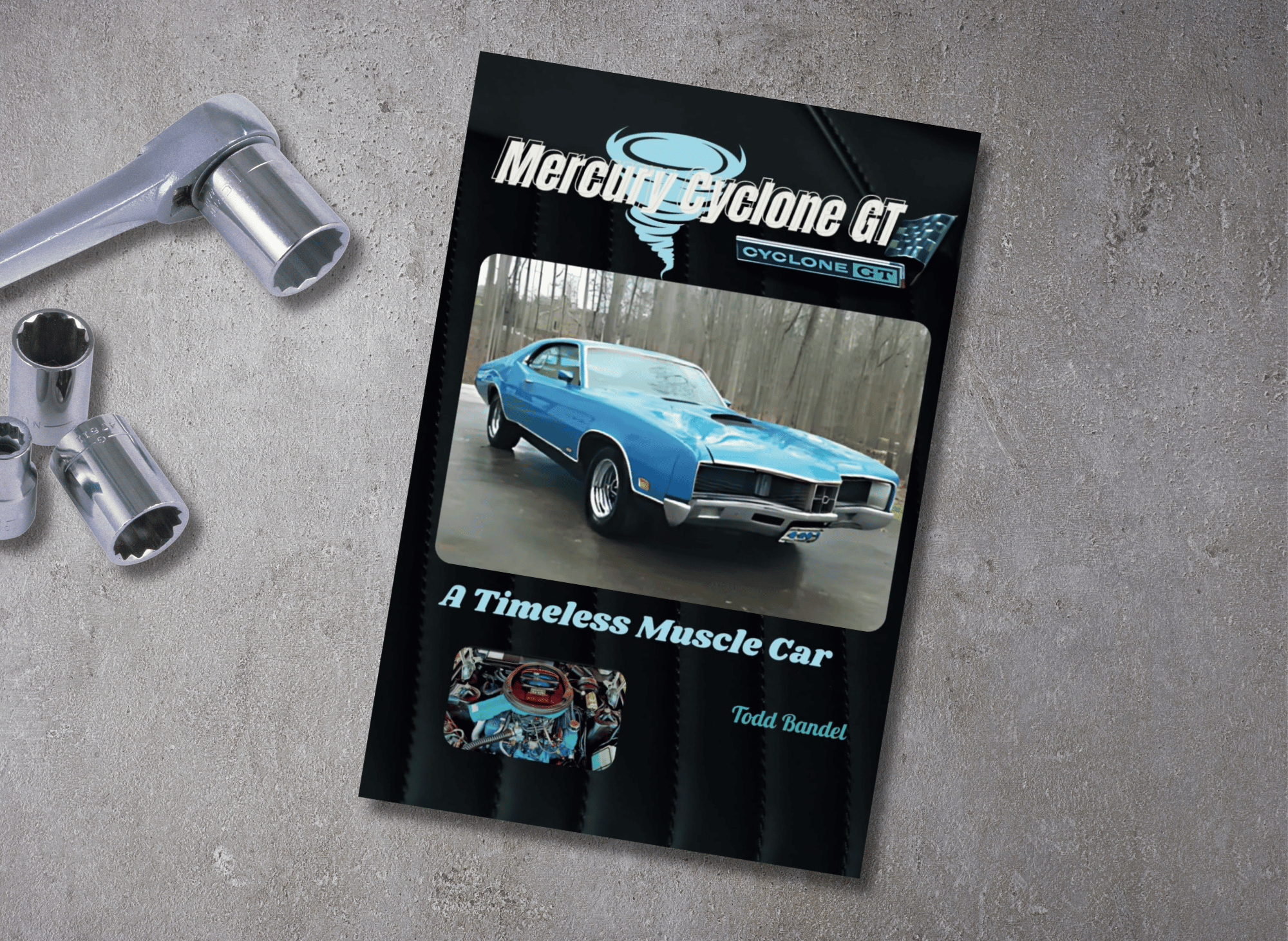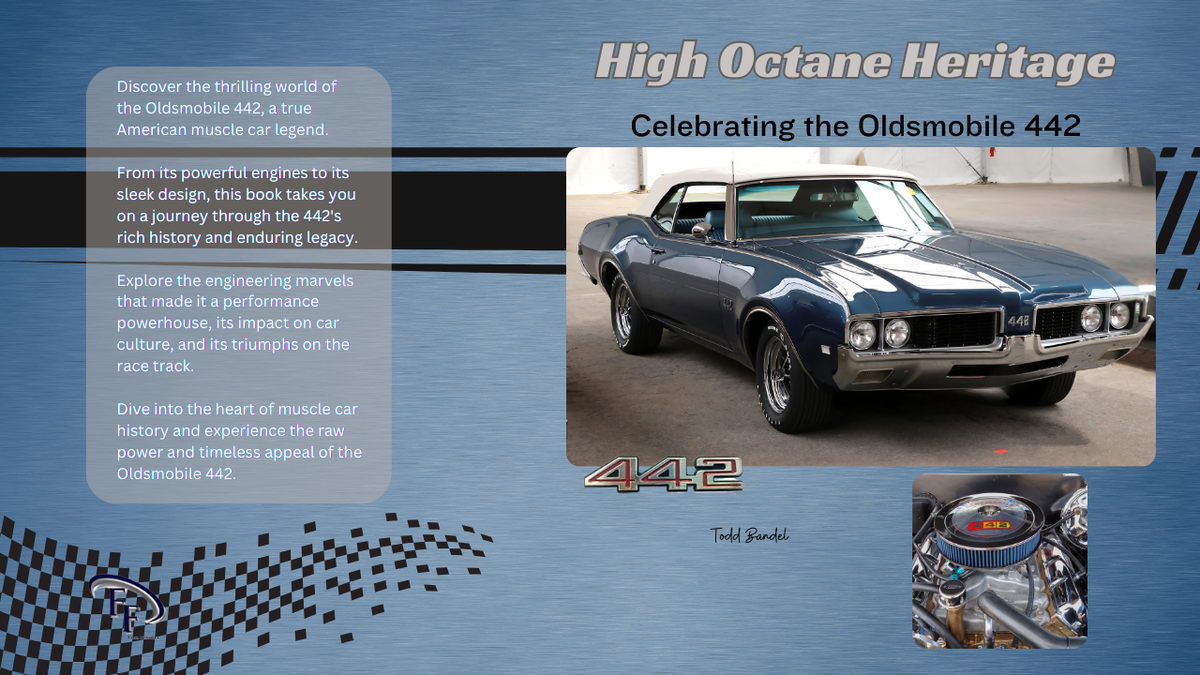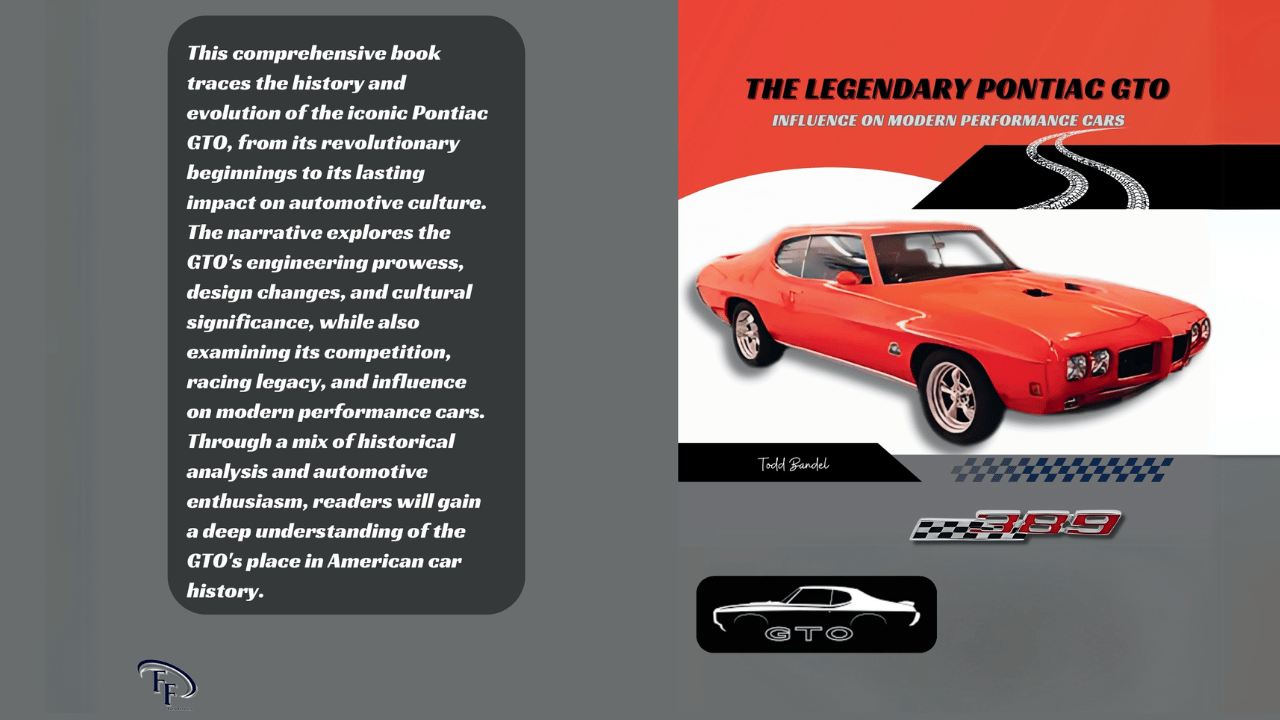Mercury Cyclone GT: A Timeless Muscle Car
The Mercury Cyclone GT’s timeless allure, performance, and collector value have made this muscle car an American automotive legend.
Welcome to Mechanicaddicts. As an Amazon Associate, we earn from qualifying purchases (at no cost to you) from links found within these pages if you choose to buy something.
The Mercury Cyclone GT roared onto the stage during one of America’s most exciting automotive eras. With its blend of innovation, raw power, and head-turning design, this classic muscle car, including the 1964 Mercury Comet Cyclone, the Mercury Comet Cyclone, and the Mercury Montego, holds a special place in the hearts of enthusiasts and collectors alike.
Whether you’re drawn to its stunning exterior or the exhilarating performance lurking beneath the hood, the Cyclone GT continues to embody the golden age of American muscle cars.
The Mercury brand gained acceptance among car enthusiasts due to its performance models, including the Mercury Comet Cyclone, Standard Comet, and Cyclone GT.
This guide dives deep into the Mercury Cyclone GT’s history, features, and legacy. From its unforgettable roar on the road to its current value as a collector’s dream, you’ll uncover why this muscle car, the Mercury Comet Cyclone, remains a timeless icon.

Mercury Cyclone GT: A Timeless Muscle Car
Witness the roar and refinement of an American icon as "The Mercury Cyclone GT: A Timeless Muscle Car" promises to immerse you in the thrilling evolution of design, power, and cultural legacy.
Introduction to the Mercury Cyclone GT
The Mercury Cyclone GT is a high-performance variant of the Mercury Cyclone, a fourth generation that rolled off the assembly line of cars produced by the Mercury line division of Ford from 1964 to 1971. Introduced in 1964 as a performance-oriented version of the Mercury Comet, the Cyclone GT quickly gained popularity among car enthusiasts.
With its powerful engine, unique styling, and impressive performance capabilities, the Cyclone GT became a highly sought-after model among classic car collectors. This section delves into the history and development of the Mercury Cyclone GT, exploring its rare and high-performance models and providing information on its production, price, and condition.

The Origins of an Icon
The Mercury Cyclone GT made its debut in the 1960s, a time when muscle cars were dominating American roads and pop culture. It was Mercury’s response to the booming demand for high-performance cars, and it quickly captured attention with its sleek design and impressive capabilities.
Positioned as part of the mid-sized Mercury Comet lineup, the Cyclone GT offered drivers a thrilling blend of style, comfort, and power that was standard fare in its class.
The 1964 Mercury Comet Cyclone was introduced as a high-performance vehicle, marking a significant milestone in the muscle car market with its notable design features, including a four-barrel carburetor and engine specifications.
What set the Cyclone GT apart was its ability to balance aggression with refinement, which enthusiasts would use to describe its performance. It wasn’t just fast; it was a machine that embodied innovation and character, earning it a lasting legacy in the automotive world.

History and Development
The Mercury Cyclone was first introduced in 1964 as a performance-oriented version of the Mercury Comet. Based on the Mercury Comet model line, the Cyclone was intended to serve as a competitor to other high-performance cars of the time, such as the Plymouth Barracuda ,Pontiac GTO and the Ford Mustang. Built with a focus on speed and performance, the Cyclone featured a powerful engine, a close-ratio transmission, and a competition handling package.
Over the years, the Cyclone underwent several changes, including the introduction of new engine options like the Super Cobra Jet, and the addition of new styling features such as a blacked out grille center section and unique stripes. The Cyclone was produced for four generations, with the final generation being produced in 1971. The Mercury brand, introduced by Edsel Ford in 1938, was positioned as a mid-priced marque to span the gap between Ford and the high-end Lincoln division.

Design and Features
Exterior Brilliance
The Cyclone GT was as much an aesthetic masterpiece as it was a performance beast. Its aerodynamic body lines, prominent front grille, and fastback roofline gave it a distinct and aggressive presence on the road. The bold hood scoops and optional racing stripes added to its sporty character, making it a must-see car at every stoplight. Every detail, from the chrome trim to its sharp color options, reflected the era’s daring approach to design.
Positioned between the Cougar pony car and other full-size models within the Mercury brand lineup, the Cyclone GT was largely overshadowed by the more popular Cougar, yet it carved out its own identity as a performance-oriented muscle car.
Interior Craftsmanship
Step inside the Cyclone GT, and you’re greeted with a cabin built to impress. The sporty steering wheel, bucket seats, and refined dashboard layout were crafted with the driver in mind. Mercury ensured that comfort matched performance, making this car a joy for both short sprints and long-distance cruising.
Additionally, the Cyclone GT featured a 'Rally-Pac' gauge cluster and an optional engine dress-up kit that provided additional metrics such as a vacuum gauge and elapsed-time clock, enhancing the car's appeal to performance enthusiasts.

Super Cobra Jet Performance-focused Features
Mercury didn’t just focus on looks; the Cyclone GT’s design, including its exhaust system, was tailored for speed and aerodynamics. Innovations such as the functional hood scoops and rear spoilers were more than just cosmetic touches; they were added to enhance the car’s handling and performance capability.
Enhancements made to the engine exhaust valves significantly contributed to the Cyclone GT's horsepower, overall performance, and market price.
Performance and Handling
At the heart of the Mercury Cyclone GT was an array of powerful engines. The most iconic option was the 7.0L Cobra Jet V8, which packed a jaw-dropping 335 horsepower. This engine turned the Cyclone GT into a road rocket, capable of thrilling straight-line speed. For those who craved more refinement, a variety of smaller engines offered the perfect balance between power and fuel economy.
Additionally, the Cyclone GT offered a 'drag pak' option, which included enhanced performance features specifically tailored for drag racing enthusiasts. This package included a Traction-Lok unit and a specific gear set that improved the vehicle's performance, making it more competitive on the racetrack.
The car’s handling was surprisingly precise for a muscle car of its time. Equipped with high-performance suspension and responsive steering, the Cyclone GT could tackle winding roads while maintaining a smooth and comfortable ride. Whether you were racing at the track or cruising on the highway, the Cyclone GT delivered an unmatched driving experience.

The Track Legacy
Beyond its appeal on the street, the Cyclone GT also showcased its prowess on the racetrack. Four stock Mercury Comet Cyclones participated in a rigorous driving challenge at Daytona, showcasing their performance capabilities.
Competing in events like NASCAR boosted its reputation as a serious contender in the performance car market, where it drew a lot of attention. Its strong performance solidified Mercury’s position alongside brands like Ford, Chevrolet, and Dodge in the competitive muscle car segment.
Rare and High-Performance Models like the Cyclone Spoiler
One of the rarest and most highly sought-after models of the Cyclone line is the Mercury Cyclone Spoiler. Produced in limited numbers, the Spoiler was designed as a high-performance variant of the Cyclone, featuring a powerful engine, a unique styling package, and a number of performance-oriented accessories. The Spoiler was available in several different trim levels, including the Cale Yarborough Special and the Dan Gurney Special, each featuring its own unique set of styling and performance features.
Powered by the Ram-Air version of the 429 Cobra Jet engine, the Cyclone Spoiler produced 370 horsepower and 450 lb-ft of torque. Transmission options included a close-ratio, Toploader design, four-speed manual transmission, and an optional console-shifted, C-6 Select-Shift automatic. The rear end was equipped with a 9-inch differential with ratios of 3.00:1, 3.25:1, or 3.50:1, or an upgraded rear end package with a Traction-Lok unit or a Detroit Locker differential.
The car’s brakes consisted of drums all around, with power front units optional. The Cyclone Spoiler was available in standard exterior colors, including Competition Yellow, Competition Blue, Pastel Blue, Competition Green, and Competition Orange. Only 1,631 Cyclone Spoilers were produced in 1970, with a mere 341 equipped with the 429 Super Cobra Jet option.
The Cyclone Spoiler was discontinued in 1971, with the Super Cobra Jet engine dropped and the base engine becoming the M Code 351 Cleveland with a four-barrel carburetor. The Cyclone’s production numbers were a testament to its growing popularity and reputation as a performance car.
The average sale price of a Mercury Cyclone is around $46,325, with a total of 100 sales and a total sales revenue of $4.6 million. The highest sale price of a Mercury Cyclone was $198,000, while the lowest sale price was $36,000.

By following this structured approach, the new sections will seamlessly integrate into the existing article, providing a comprehensive and engaging overview of the Mercury Cyclone GT.
Collectibility and Value
For collectors, the Mercury Cyclone GT is a rare gem. Its limited production numbers and unique design features make it highly sought after in the classic car market. According to recent auction data, pristine models of the Cyclone GT can fetch anywhere from $35,000 to upwards of $70,000, depending on their condition, originality, and rarity of features.
The choices that prospective buyers can make when selecting performance upgrades or engine types for the Cyclone GT significantly influence its overall use, appeal, and desirability among automotive enthusiasts.
Factors Driving Value:
- Originality: Cars with matching numbers for the engine and transmission are especially prized.
- Desirable Features: Limited-edition trims, like the Cyclone Spoiler II, command premium prices.
- Condition: Fully restored examples in excellent condition can significantly boost value, with rust-free bodies being a major selling point.
As demand for classic American muscle continues to grow, the Cyclone GT stands out as a worthy investment for many people, including any serious collector of meteor-era muscle cars.

Restoration Tips for the Mercury Cyclone GT
Restoring a Mercury Cyclone GT can be a rewarding project, but it requires care and attention to detail. Here are some practical tips for bringing this muscle car back to life:
- Start With a Thorough Inspection
Identify any rust issues or structural damage, especially in areas like the chassis and wheel wells of the vehicle .
- Source Authentic Parts
Finding genuine Mercury parts can be a challenge, but finding genuine mercury parts is worth the effort to maintain the car’s authenticity. Online marketplaces, forums, and specialty shops are great resources.
- Focus on the Engine
The V8 engine is the heart of the Cyclone GT. Ensure it’s tuned and running smoothly, and consider a professional rebuild if necessary.
- Revive the Interior
Restoring the Cyclone GT’s interior to its original glory involves finding period-correct upholstery and trim pieces. Pay attention to the details that make the cabin feel authentic.
- Paint Matters
The Cyclone GT’s color scheme was a key part of its appeal. Stick to factory-correct paint codes for maximum authenticity and resale value.
- Lean on the Community
Join forums, stores, and groups of Cyclone GT enthusiasts. Their collective experience and advice can be invaluable during the restoration process.
Minor Improvements to performance and aesthetic elements were provided in response to consumer feedback, including an option package highlighting the ordered manufacturer's commitment to delivering a superior driving experience, which aligns with the latest information on consumer preferences.
By following these steps, you’ll not only preserve the legacy of the Cyclone GT but also create a showstopper that turns heads on the road.

Reliving the Legend of the Mercury Cyclone GT
The Mercury Cyclone GT is much more than a classic muscle car; it’s a symbol of American innovation, power, style, and the era of the meteor, including the iconic 1964 Mercury Comet. From its groundbreaking design to its roaring V8s, every detail of the Cyclone GT highlights why it remains a timeless masterpiece. For collectors and enthusiasts, it offers an unmatched blend of aesthetic beauty and raw performance, making it a must-have piece of muscle car history.
Many muscle car enthusiasts are devoted to specific brands or models, illustrating the community's diversity of opinions and preferences.
If you’re restoring one, treasure the process of bringing this icon back to life, especially once it is sold. If you’re lucky enough to own one, you’re a part of its enduring story.
For Further Learning
To discover even more about the Cyclone GT and its legacy, check out Todd Bandel’s book, Mercury Cyclone GT: A Timeless Muscle Car. It’s an essential read for anyone passionate about classic American muscle cars.
Thank you for reading!
Your friend,
Todd
#MercuryCyclone #ClassicCars #MuscleCar #VintageVehicles #CarLovers #RetroAutomobile #AmericanMuscle #CarRestoration #CollectorCars #AutomotiveHistory
🚗🔥🏁✨🔧🛠️⛽🚘📸🏎️







